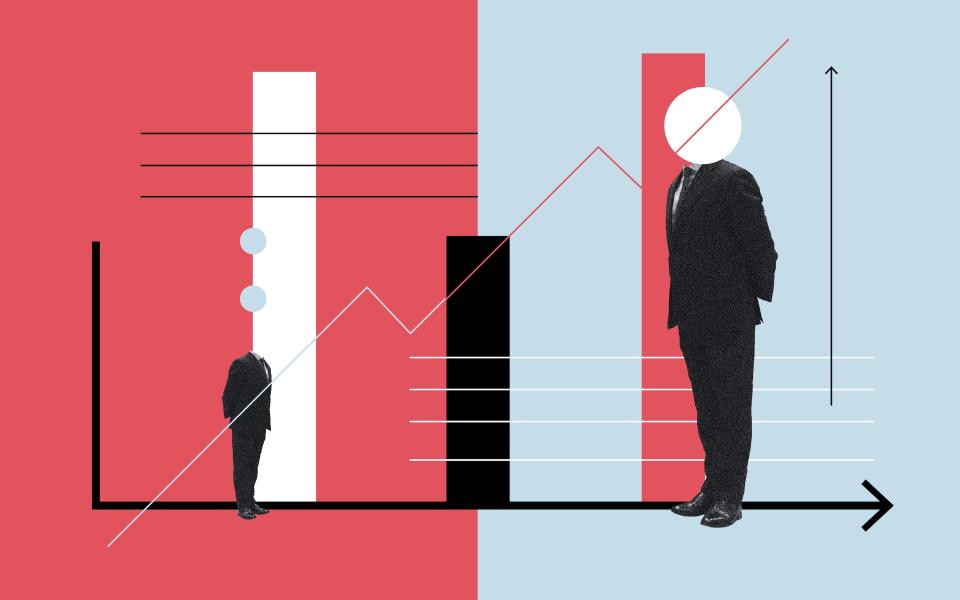What to do with £10k: the ultimate plan for a 50-year-old investor

This is the fourth in our six-part series looking at how to invest £10,000 at different ages. Previously we looked at 20-year-old, 30-year-old and 40-year old investors. Come back next Monday to find our financial plan for a 60-year-old.
By the time we reach 50 many of us will have one eye on retiring, but there are a number of things that can crop up unexpectedly that mean we dip into our savings.
This could be helping children with house deposits or university fees, ill health or even a divorce and second marriage. The decade that might intuitively give you the chance to save or even retire early will still have short-term events that need to be accounted for.
If you have saved up £10,000, knowing how to invest in your 50s is incredibly difficult. The days of investing 50pc in bonds and 50pc in stocks are gladly done, as this was an archaic approach to investing supported for too many years.
Investors can and should be more savvy and with higher life expectancy, more should be invested in stocks. Telegraph Money takes you through the different options a 50-year investor could face.
Retirement
While this has been covered in previous decades, pensions should be the primary concern for investors in their 50s.
Investors should maximise the potential from the £10,000 by investing it via a self-invested personal pension (Sipp), which provide tax breaks.
The investment strategy must be balanced to make sure it has enough invested in risky assets like stocks, to drive returns, but also not so much that entire amount is at risk from a stock market fall.
Nick Wood, of investment manager Quilter Cheviot, said investors will need to balance these aims but can do so by investing in defensive funds and a stocks and shares fund.
A defensive option is the £3.5bn RIT Capital Partners investment trust. This invests in global stocks, bonds and alternatives like property and infrastructure, but focuses on not losing money when markets are falling, rather than trying to beat them when they rise.

“That diversification, managed by a strong team, has produced a very reliable return, especially in difficult periods,” he said.
As 50-year-olds may live another 30 to 40 years, he recommend Alliance Trust which only invests in global stocks. The £3bn portfolio employs eight different managers from around the world to invest in their specialist areas.
“The trust should return more than the global stock market without taking too much undue risk,” Mr Wood said.
For more ideas on how to balance both growth and defensive funds, Telegraph Money has our own top 10 list of each.
Justin Onuekwusi of asset manager Legal & General said investors should also review any existing investments when planning where to put the £10,000.
“If you’re already invested in one asset class (i.e. just stocks), think about re-balancing your whole portfolio and allocating new money towards other assets," he said.

Life events
While retirement may be the main goal, there are other events you may need the £10,000 for.
An unwanted but common event is divorce. Laith Khalaf, of fund shop Hargreaves Lansdown, said divorce meant sharing assets, where one party could end up being dependent on property, while the other gets the pension pot. The £10,000 investment may be needed to meet any rebalancing costs.
For those with children, costs will always present themselves, such as paying for university fees. Ideally this would come from income.
“You could invest the £10,000 into your Isa and consider buying an income fund to help cover ongoing university costs,” Mr Khalaf said.
If children have graduated, you might want to help them get on the property ladder.
“This is likely to take the form of financial help such as providing a lump sum for a deposit, or perhaps a monthly contribution to go into a Lifetime Isa,” Mr Khalaf added.

Get an adviser
John Husselbee, of fund firm Liontrust, said getting professional help when faced with the £10,000 dilemma could be fruitful at this stage in life. Although some may have been investing for eyars, the prospect of funding retirement might be a rude awakening for others.
“Whatever your situation, this is a key time to consult a financial adviser, who can help you plan your target retirement age, your risk appetite, and your other financial goals,” he said.
What to do with £10k is a six-part series looking at how to invest £10,000 at different ages. It will be published on Monday morning at 7am for six weeks. Come back next Monday to find our financial plan for a 50-year-old.

 Yahoo Finance
Yahoo Finance 